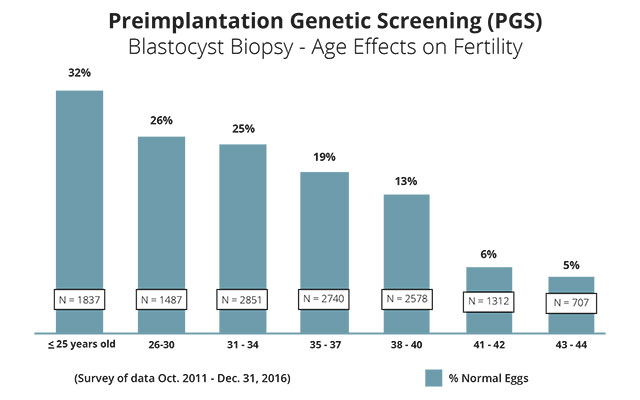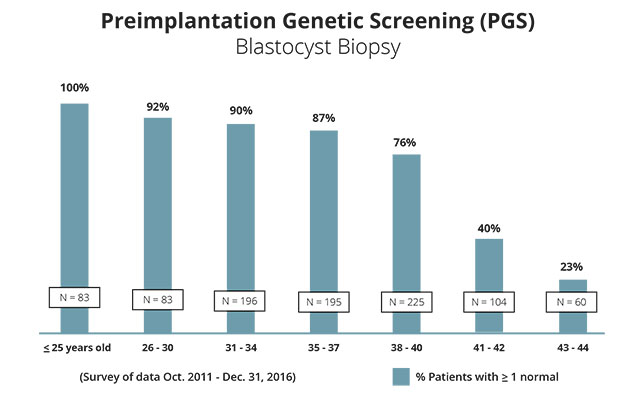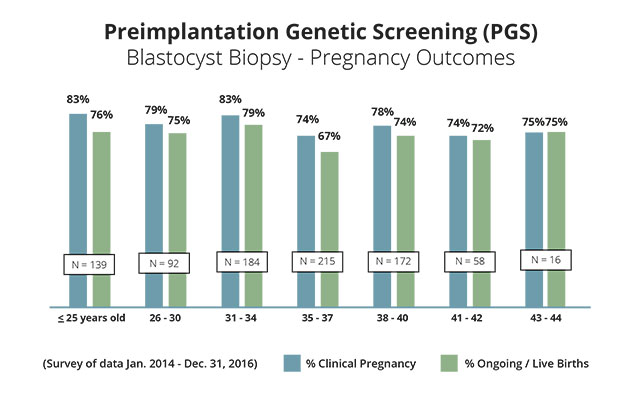What are the PGT-A success rates at our Newport Beach fertility center?
Since we have been performing PGT-A on blastocysts (day 5 or 6 embryos) at our Newport Beach fertility center, we have found the accuracy of the procedure to be greatly improved. However, we have also realized that there is even more genetic abnormality in eggs that we previously thought.
The graph below shows the percentage of genetically normal eggs of women in various age groups.
In accordance with these findings, younger women are more likely to have at least one genetically normal embryo. As expected, the percentage of women with at least one normal embryo declines with increasing age. The graph below illustrates what we have discovered. Up to age 40, most women will have at least one normal embryo.
Our results from PGT-A are even better than we initially expected. It is now clear that for women of all ages, PGT-A leads to higher pregnancy rates than we have ever experienced previously. We now believe that PGT-A is recommended for all women undergoing IVF to maximize their chances of success.’ The graph below shows the pregnancy outcomes of women using PGT-A since we have been performing blastocyst biopsy with subsequent embryo vitrification.


